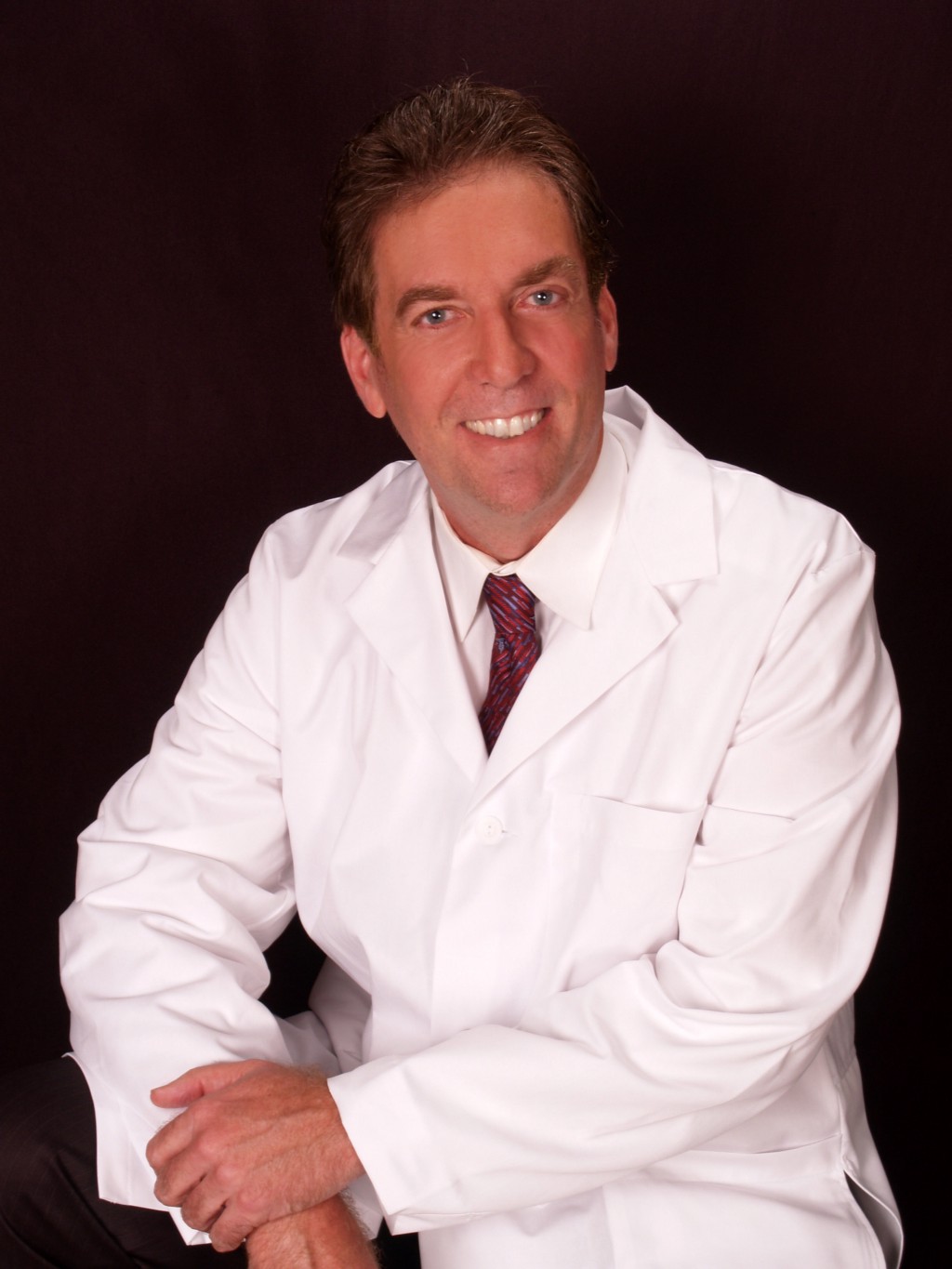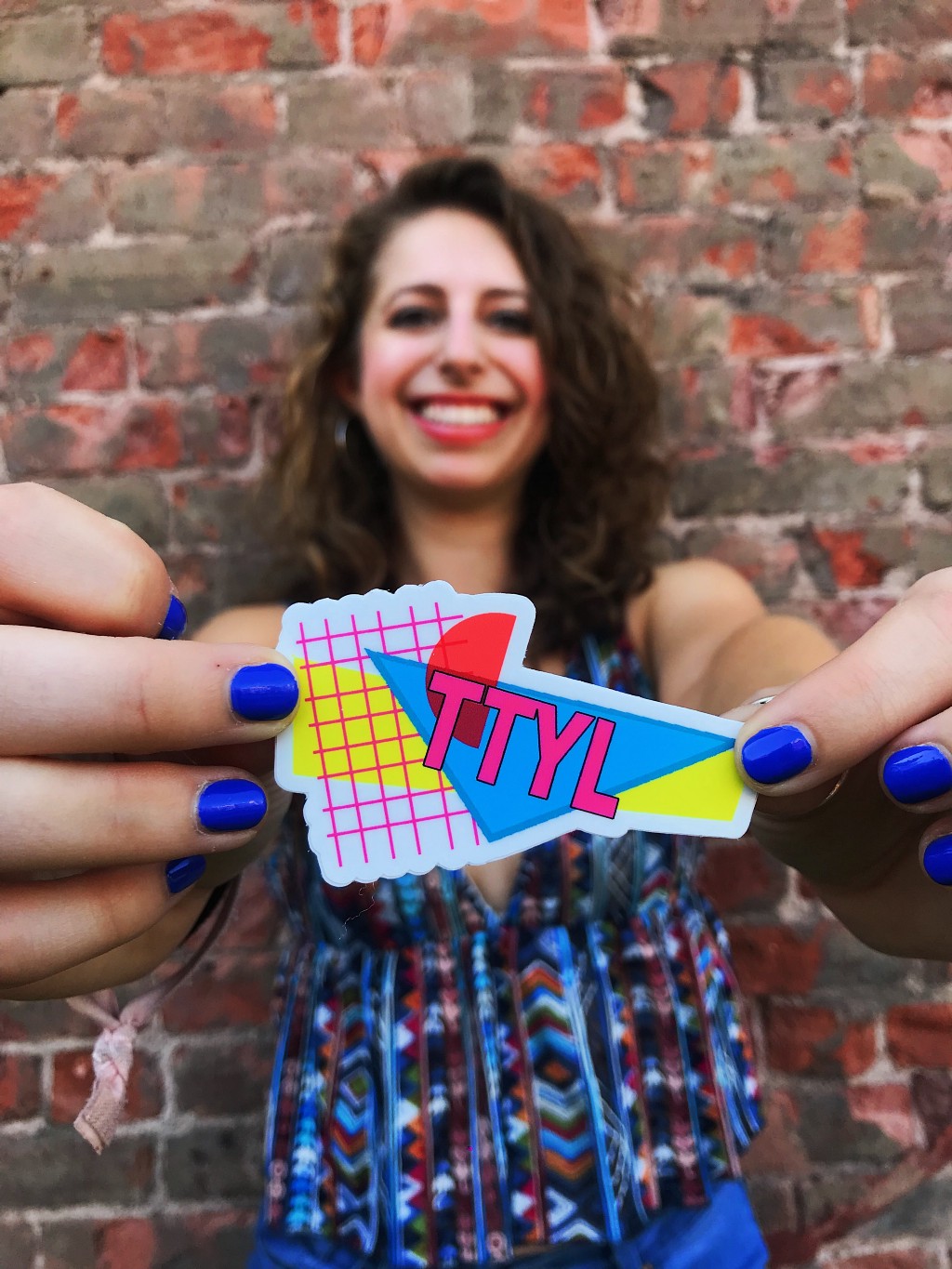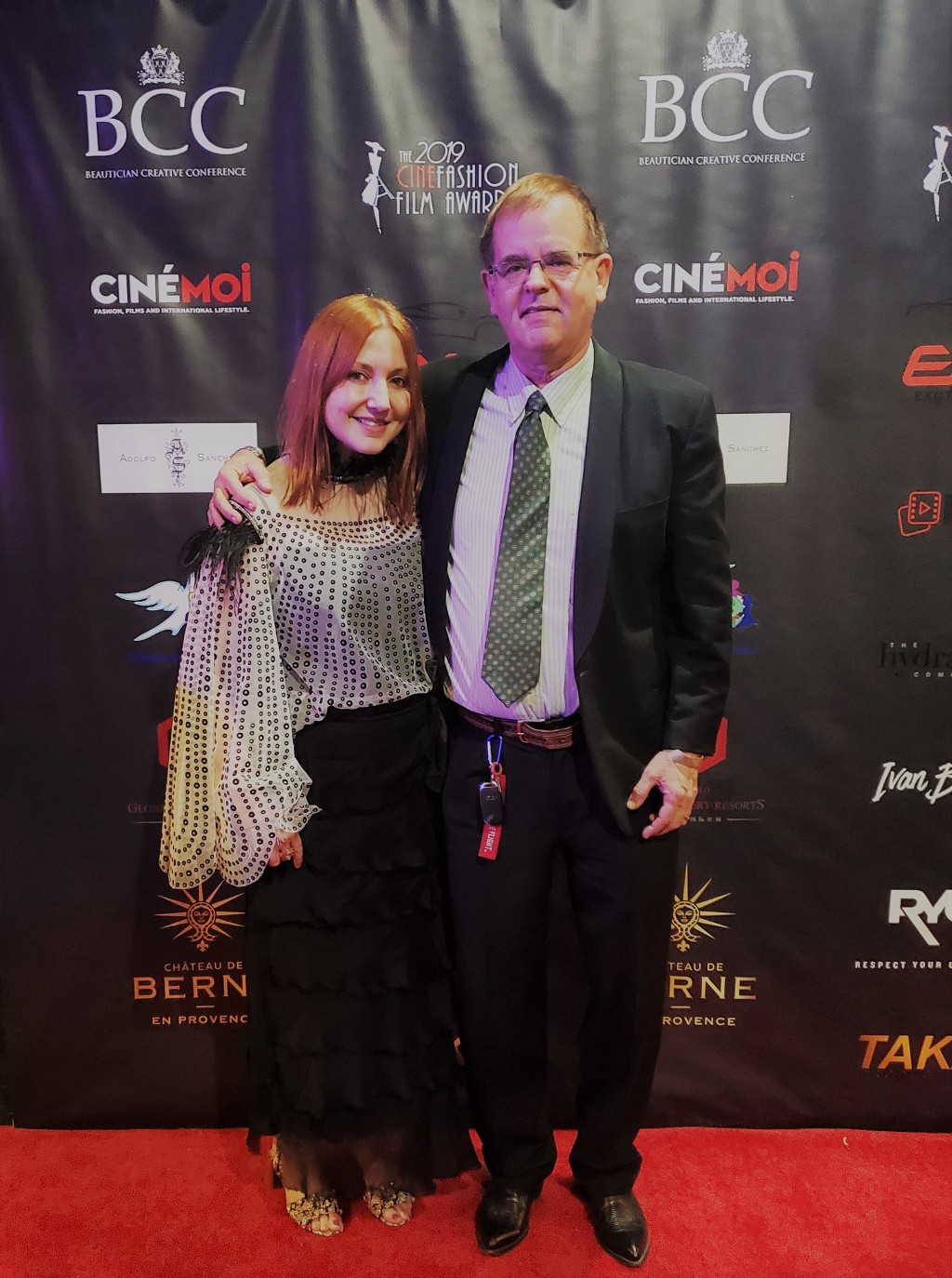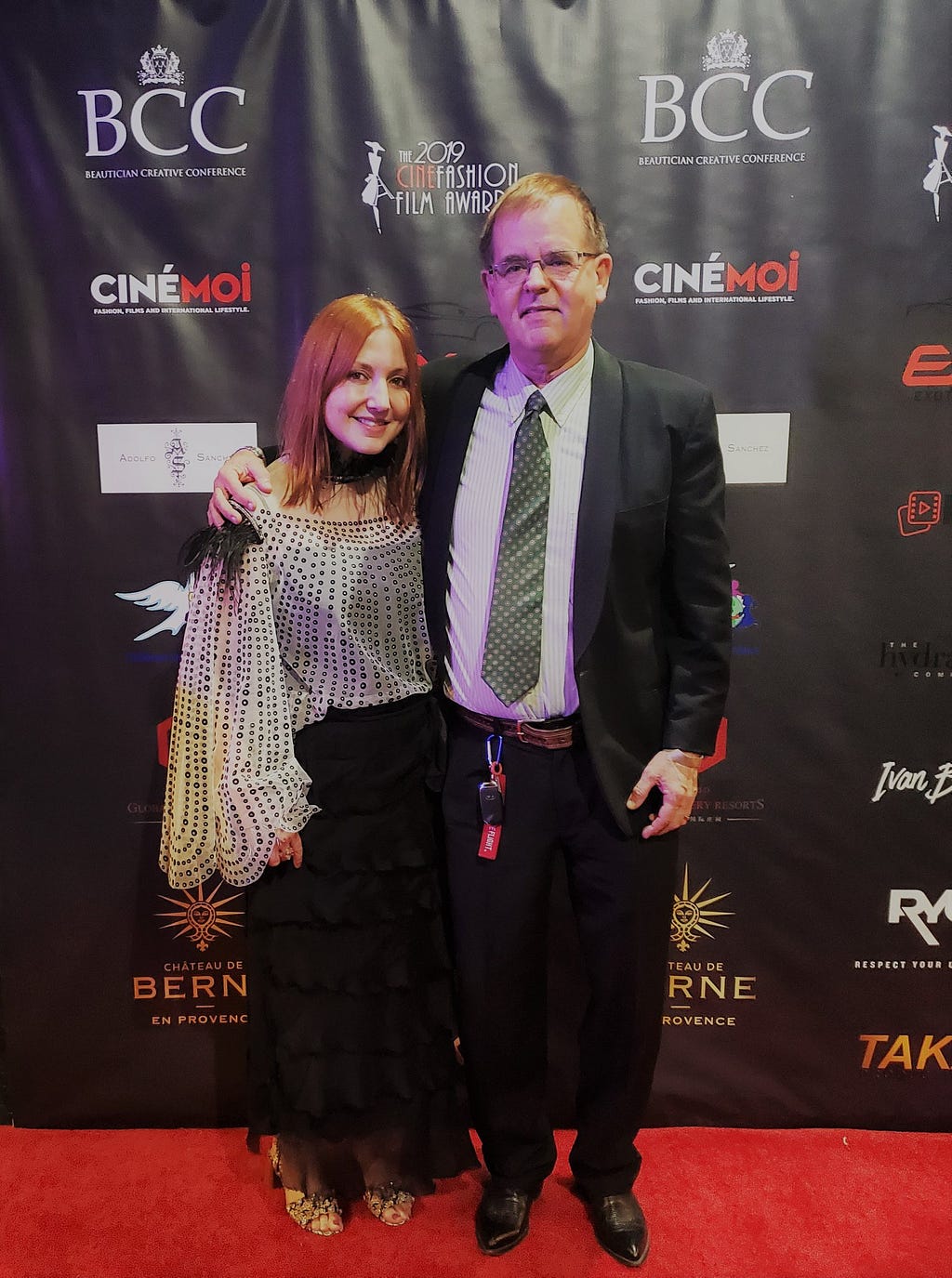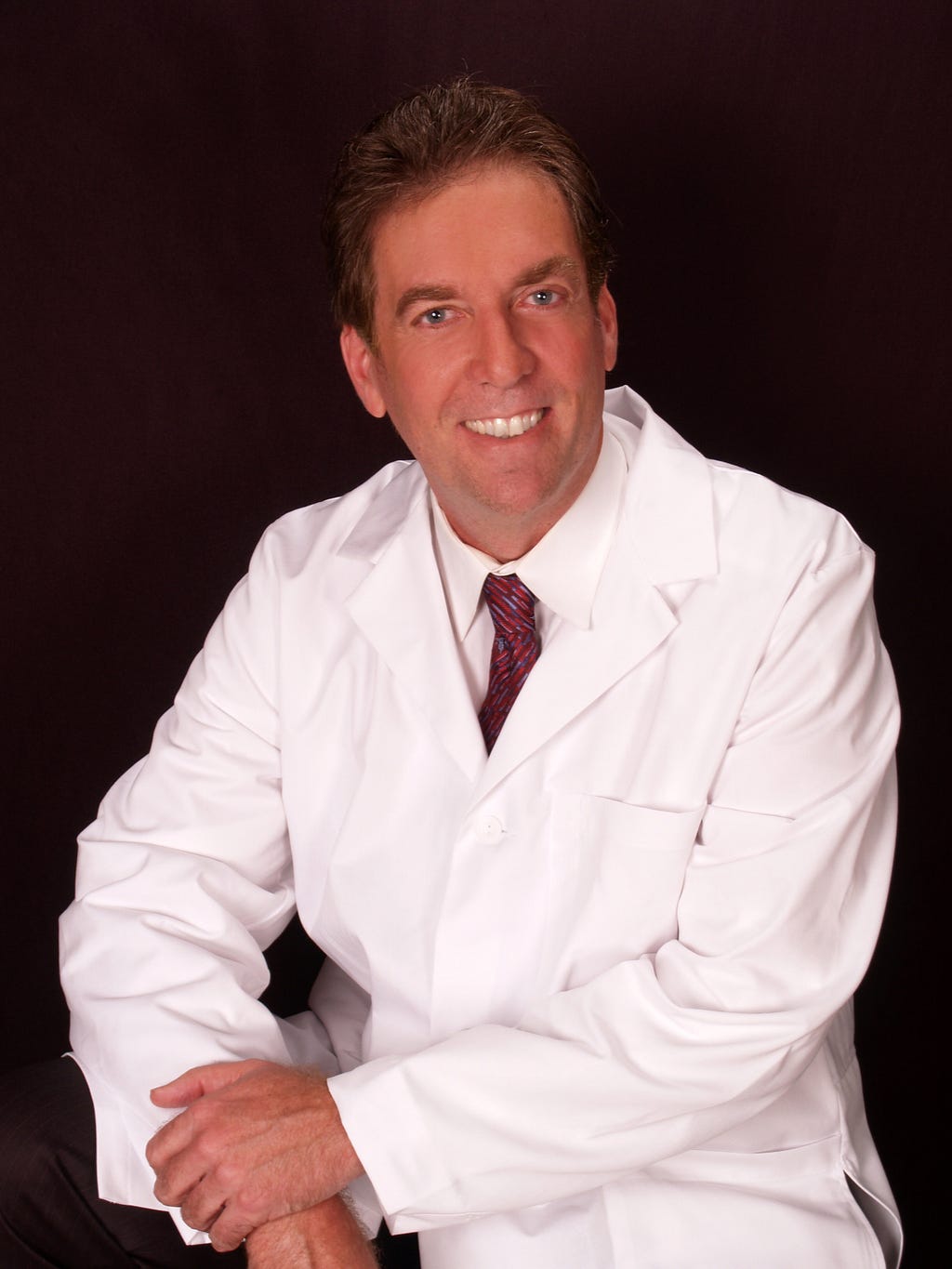
Destress yourself. Mindful meditation is one way, along with other relaxing activities that you enjoy. We’ve all seen people experiencing a traumatic event, such as loss of a loved one that brings on the outward reflection of the stress-inducing event — namely lines and wrinkles and sagging skin. One reason this happens is because of cortisol release during the stressful times that results in a direct breakdown of the skin’s matrix. That matrix is what holds the skin in place, provides thickness and supplety, and when broken down the untoward effects occur. Destressing and reducing the chronic cortisol release will effectively reduce lines and wrinkles.
As a part of our series about how technology will be changing the beauty industry over the next five years, I had the pleasure of interviewing Dr. Greg Maguire, Ph.D., FRSM.
Dr. Greg Maguire, Ph.D., FRSM, is a former professor of neuroscience and ophthalmology at the University of California, San Diego School of Medicine and a bioengineer at the University of California, Berkeley. His graduate training was at the University of California, Berkeley, University of Houston, University of Texas, The Marine Biological Labs, Woods Hole, MA, and Cold Spring Harbor Laboratory, NY. He was visiting associate professor of physiology at Keio University School of Medicine in Tokyo, Japan, visiting assistant professor of molecular neurobiology at the University of Washington, and visiting faculty at Massachusetts General Hospital (MGH), at Harvard University. Awarded a prestigious Fulbright-Fogarty Fellowship from the National Institutes of Health (NIH), Dr. Maguire managed his NIH and NSF funded laboratory at UCSD for the study of tissue degeneration and regeneration, and the role of stem cell released molecules(SRM) through paracrine and autocrine actions to maintain, repair, and regenerate human tissues. His NIH funded studies of systems biology and reverse engineering at the University of California, Berkeley and stem cell biology at UC San Diego led to the development of adult stem cell-based S2RM® technology for the development of therapeutics and medical procedures. Dr. Maguire has over 100 publications, a number of patents and is author of three book, including his latest entitled, “Thinking and Eating for Two: The Science of Using Systems 1 and 2 Thinking to Nourish Self and Symbionts.” He is president of the California Physiological Society, and is founder and CEO of BioRegenerative Sciences, Inc and NeoGenesis, Inc.
Thank you so much for doing this with us! Before we dive in, our readers would love to learn a bit more about you. Can you tell us a story about what brought you to this specific career path?
As a child I was always interested in science and engineering. Learning new things and creating new things, including artwork, and making rockets and explosives, and electronics was a natural interest and my mother did much to foster my native interest in science. In the fourth grade, my public school teacher, Nathaniel Davidson, had us do a simple experiment on the second law of thermodynamics. He taught us the scientific method, how to perform the experiment, and how to interpret and present the results orally and in writing. When I finished the project an overwhelming understanding came over me that science could answer many of those basic questions we ask as kids. At that point I knew my path forward would be as a scientist. My engineering interest, and I was previously a Research Engineer at UC Berkeley, one of the top 3 engineering schools in the country where I learned much, has been satisfied because I use engineering methods to translate the science from the laboratory to the formulation and creation of new technologies and products.
Can you share the most interesting story that happened to you since you began your career?
Fortunately I’ve had many interesting experiences in my career that has not only given me the privilege to live and work in a number of places in the US, but also in the world. One such privilege that our government afforded me was to be awarded a Fulbright Scholarship from the National Institutes of Health to study and live abroad in Tokyo, Japan at the Keio University School of Medicine. To live with the Japanese people and work with the Japanese scientists and physicians was a means to learn from a very successful culture who do things differently compared to how they’re done here in the US. An example is that there is more of a holistic approach to thought in Japan and the East compared to the more reductionist thought here in the USA. The most successful form of thought is to bring the two together, and bringing different cultures together to learn from one another is one of the successes of the Fulbright program.
Are you able to identify a “tipping point” in your career when you started to see success? Did you start doing anything different? Are there takeaways or lessons that others can learn from that?
Yes, I applied for a fellowship to study at the Marine Biological Laboratory (MBL), Woods Hole, Massachusetts, never expecting to be selected from a wide variety of applicants from around the world at leading institutions such as Cambridge University in the UK. There was a new technology being taught at the MBL that I wanted to learn, a biophysical technology for which the Nobel Prize in Physiology or Medicine would be awarded six years later. I was being taught by Nobel Prize winners and those that would go on to be awarded the Nobel Prize. A young Rod MacKinnon, one of those who would go on to win the Nobel Prize in Chemistry later in 2003, was one of our close colleagues in the laboratory. When I first arrived at the MBL I felt very intimidated by all of the highly successful and intellectual people in attendance. However, once I began my work and achieved my own success at the MBL I realized that I was accomplished in my own way as much as anyone else. One of the life lessons from these experiences is to face your own doubts and overcome them, and you’ll most likely come away with the confidence that you can achieve those things in life with which you engage. At Berkeley, my next step in life after the MBL, we always learned to have confidence without arrogance. That arrogance, or attitude as some now call it at Berkeley, is the ruination of the scientific mind and precludes engaging in rational, evidence-based thought — something needed in any successful endeavor. Another lesson taught by my days at the MBL and Berkeley is to be a student forever. This goes beyond curiosity. To be a student is to be curious, to ask questions, but to be a student means that you’ll do the work to answer those questions.
None of us are able to achieve success without some help along the way. Is there a particular person to whom you are grateful who helped get you to where you are? Can you share a story about that?
Yes, many people have been important to me and given me so much, but if I’m asked to choose just one; that one would be Professor Dr. Frank Werblin, Ph.D at UC Berkeley. Frank was known as a tough guy. Not in a bad sense, but in that he was highly accomplished, intellectual, erudite, and very creative, and demanded the same from anyone in his lab. If you didn’t perform, you didn’t last long with Frank, and many people avoided working with him for that reason. But if you were bright and worked hard, Frank gave a lot back to you. Frank taught me much about science and engineering, but also about how to think, conceptualize my thoughts, and how to communicate those thoughts. I called him a couple of years ago on Father’s Day to thank him for being my scientific father.
Ok super. Let’s now shift to the main part of our discussion. The beauty industry today has access to technology that was inconceivable only a short time ago. Can you tell us about the “cutting edge” (pardon the pun) technologies that you are working with or introducing? How do you think that will help people?
In medicine there is an edict, “Primum non nocere,” translated to the English from Latin, meaning “First, do no harm.” While I was working with stem cell technology at the University of California, San Diego School of Medicine, my laboratory was focused on a new means of therapeutic development that would renormalize the physiology of the brain in diseases such as Alzheimer’s and amyotrophic lateral sclerosis. This was a new strategy that departed from the previous strategies of putting something foreign into the brain, or removing part of the brain to fix the disease. My new strategy, called “Physiological Renormalization” is to return to the brain or other diseased tissue what was normally present when that tissue was young and healthy. Key to this strategy is doing no harm, instead giving the tissue back what it needs to be healthy. I just published a peer-reviewed scientific paper in Future Science that details the success of this strategy in treating nervous system diseases, skin diseases, and in treating cancer. A fellow colleague of mine, Prof. Dr. James Allison, Ph.D, while we were both at Berkeley, developed a new cancer treatment, called “checkpoint inhibitors,” using physiological renormalization for which he won the Nobel Prize in Physiology or Medicine in 2018. This a very powerful technology that renormalizes the immune system so that it can once again kill the cancer cells. If you heard about President Jimmy Carter being treated with a new type of drug to successfully treat brain cancer, you’ve heard about Dr. Allison’s “checkpoint inhibitor” technology. As described in my Future Science paper we turned this technology toward the treatment of skin conditions too. As an entrepreneur one creates an entity to solve a problem, as I did with NeoGenesis, Inc. Entrepreneurs are therefore often asked, “What problem are you solving?” I can answer this at two levels. First, drugs and therapeutics often cause more harm than benefit. Our technology solves this problem by simply making your tissues normal again by putting back into the tissue what’s missing. Second most of the drugs currently on the market don’t work well. Our strategy for physiological renormalization has been found to work well for many cancers, for neurodegeneration, and for skin inflammation and barrier breakdown.
More specifically for skin, we have two basic ways of treating the skin with this new “do no harm” strategy to renormalize the skin’s physiology. Both means of renormalizing the skin’s physiology involve renormalizing stem cell function in the skin. First, we use an adult stem cell-based technology (S2RM technology) that I first developed for brain diseases while I was a professor at UCSD School of Medicine. Different types of adult stem cells are resident in any of our given tissues, including brain and skin. Those different type of stem cells in the skin each release a collection of molecules, called stem cells released molecules (SRM), that provide the building blocks for the skin (collagen and laminin for example), instruction set molecules that direct the building block molecules to form the skin’s structure (HAPLN-1 for example), antioxidants that protect the proteins and the DNA, proteins that repair or clear-away damaged proteins (heat shock proteins for example), and molecules that control and resolve inflammation. Each of the different adult stem cells releases its own specific set of molecules, and the pools of molecules from the different stem cell types work together synergistically. This is how our skin is maintained and healed, through the release of these different molecules into the skin from our stem cells. Unfortunately, as we age, or become ill, or have a poor lifestyle, these molecules released from the stem cells can become degraded and their numbers reduced. A loss or reduction of function results. The outward signs of this include lines and wrinkles, sagging skin, redness, irritation, and discoloration. So returning to the skin what was there when the skin was young and healthy, that collection of different molecules from the stem cells, simply returns to the skin what it needs to maintain and heal itself. The skin becomes healthier as a result. Healthy skin is beautiful skin. So this improved health state is all a result of our S2RM technology, the stem cell released molecules from more than 2 types of stem cells, hence the “2” in S2RM.
The second basic means of improving skin health is to feed one of the stem cell types, called keratinocytes, the lipids they need in order to make the skin’s barrier function. The barrier is critical because it not only prevents infectious agents and irritant from entering of bodies, the barrier also prevents moisture from leaving the skin. If the moisture content of the skin is reduced, many conditions can result including disruption of the barrier and inflammation. Because the keratinocytes can’t themselves produce all of the molecules they need, such as linoleic acid, normally the blood supply and the surrounding cells provide what is needed for the keratinocytes to produce the barrier, the fatty structure of the outermost layer of the skin’s epidermis called the stratum corneum. Without the proper amount of linoleic acid in the diet sourced from plants, the keratinocytes can’t make a fully intact barrier. Consumption of too much fats, such as that from processed oils, can induce inflammation and reduce the transport of the linoleic acid from the blood into the keratinocytes, Other factors too, such as aging, disease, and poor lifestyle can also induce chronic inflammation such that the linoleic acid doesn’t transport from the blood to the keratinocytes, and thus the barrier is not fully formed. Without the proper barrier, more inflammation ensues. What results is a positive feedback loop for inflammation and further barrier disruption. But here’s something powerful that a number of scientists discovered over the years; instead of feed the 3 lipid molecules to the keratinocytes from the blood supply, you can feed the 3 lipid (fat) types to the keratinocytes by applying them to the outside of the skin. Yes, you can topically apply the 3 types of lipids to the skin in order to naturally and completely rebuild the skin’s barrier. So this is exactly what our second product does, feeds the keratinocytes the 3 lipids to rebuild the barrier formed by the stratum corneum.
So our two pronged approach to rebuilding the skin, including the deep layers, the dermis, and the outer layer, the epidermis and its most outer, protective layer, the stratum corneum, is to: 1. Mimic what the stem cells release into the skin so that we feed the skin what the stem cells naturally make for us, the S2RM molecules, and 2. Feed the stem cells the 3 lipids they need in order to make the stratum corneum, our natural protective layer or barrier. These two methodologies renormalize the physiology of the skin to better create the youthful, healthy state. You look better, feel better, and most importantly, become healthier.
Keeping “Black Mirror” and the “Law of Unintended Consequences” in mind, can you see any potential drawbacks about this technology that people should think more deeply about?
In theory and in practice, this technology has been found to be the safest and most effective way to treat a number of skin conditions, including aged skin. We and others have published many peer-reviewed scientific and medical papers on this technology, including safety studies, and these types of products have been on the market for many years without negative side effects, such that their safety and efficacy is well recognized by scientists and practicing physicians. However, care must be taken to select the right types of stem cells to use in the formulation of these products. Some stem cell types can induce too much inflammation and proliferation, states related to scarring and cancer. There are several companies using a like technology that was created by scientists and perfectly safe, but there are two companies with which I am aware, where scientists weren’t involved, and the products are potentially very dangerous. I write about this in some of my scientific peer-reviewed papers. I’m happy to share those papers with anyone who may be interested.
Can you share 3 things that most excite you about the “beauty-tech” industry?
First, I’m pleased that a number of companies and practitioners have embraced non-destructive or minimally destructive means to treat the skin during “anti-aging’” procedures. Scientists appreciate that one of the most dangerous things a cell can do is to divide. Of course this is what happens during procedures, or using products, that induce injury and proliferation of cells. The cells must divide in order to proliferate. Each time a cell divides, the process creates mutations in the cell’s DNA. There are many repair mechanisms that the cell uses to repair the DNA mutations, but these repair mechanisms become overwhelmed when the cells are dividing rapidly during proliferative states such as wounding of the skin during these destructive procedures. DNA mutations in cells if coupled with wounded skin can induce a state of cancer, especially so when repetitive wounding procedures are performed on the skin, such that the skin is setup for a potential increase in cancer. Second, there are a number of companies embracing evidenced based technologies that do no harm and help the skin become healthier. Third, the science of the skin and the immune system of the skin is rapidly advancing at our major research universities, and a great opportunity exists for people to translate that knowledge base into meaningful new technologies.
Can you share 3 things that most concern you about the industry? If you had the ability to implement 3 ways to reform or improve the industry, what would you suggest?
Unfortunately there are a number of technologies on the market for which there is no evidence of efficacy, and worse, no evidence that they don’t do harm. Given that the industry is not highly regulated, I encourage everyone to bring to the market only those technologies that work well, and are safe. If we fail to self-regulate our industry and cause harm, then regulatory agencies will step in to control us, as they should if we fail to do it ourselves.
You are an expert about beauty. Can you share 5 ideas that anyone can use “to feel beautiful”? (Please share a story or example for each.)
Destress yourself. Mindful meditation is one way, along with other relaxing activities that you enjoy. We’ve all seen people experiencing a traumatic event, such as loss of a loved one that brings on the outward reflection of the stress-inducing event — namely lines and wrinkles and sagging skin. One reason this happens is because of cortisol release during the stressful times that results in a direct breakdown of the skin’s matrix. That matrix is what holds the skin in place, provides thickness and supplety, and when broken down the untoward effects occur. Destressing and reducing the chronic cortisol release will effectively reduce lines and wrinkles. Another important idea is to eat well, including lots of fruits and vegetables containing soluble and insoluble fiber. Many key, essential nutrients for skin function are brought to the skin through the blood supply after eating plants. Many types of antioxidants are brought to the skin this way. You need many types of antioxidants to bring about the antioxidant cascade effect. This helps to protect your DNA from mutations, and helps to protect the collagen in your skin from degradation. Most people think that all collagen renews itself often, but actually some collagens are what we call “long-lived proteins” and you may keep some of the collagen fibers in your skin throughout your whole life. Oxidation is one way that collagen can be badly damaged, and if the collagen remains with you throughout your life, then you’d be living with that damaged collagen forever. Additionally, the fiber in vegetables will reset the immune system to better fight infection and damage to the skin, and better resolve inflammation. Eating plants rich in fiber has been found to help fight influenza and even protect against cancer, and help cancer drugs, such as those checkpoint inhibitors I talked about previously, to be more effective. Feeding the skin from the “inside-out” is important, and remember that “feeding the skin from “outside-in” can also be beneficial. So eating well, and then carefully using good skin care products, and reducing the stress in your life is sure to bring radiance to your skin and enhance your overall well being.
You are a person of great influence. If you could inspire a movement that would bring the most amount of good to the most amount of people, what would that be? You never know what your idea can trigger. 🙂
I’m trying to educate people not to rely on the “healthcare” system to improve their health and well being. About 90% of your health status is dependent on your exposome, not heredity or genetics (they’re not the same). As I describe in my third book, “Thinking and Eating for Two: The Science of Using Systems 1 and 2 Thinking to Nourish Self and Symbionts” using well over 2,000 references, including most from science and medical journals, the “medical-industrial complex” is not there to make you healthy, rather the system, including physicians, are often incented to perform procedures and to sell you drugs. Over half of these procedures, and over half of the drugs don’t work, but do harm. This is hard to believe, but in my book I provide the evidence that it’s true with many peer-reviewed journal articles. The system is dangerous, and one way to avoid reliance on the system for your health is to eat well, exercise, and avoid toxic ingredients in the environment. This is what is meant by the term exposome; all of those molecules that you’re exposed to in life, such as those molecules in your food, drink, air, water, and what you put on your skin are part of your exposome. Even the molecules created in your body are part of your exposome. Did you know that when you eat insoluble fiber in vegetables, that fiber is fermented in the large intestine (colon) by bacteria (symbionts) to make short chain fatty acids, such as butyrate, leading to your innate and adaptive immune system to function better, with less inflammation? If you eat processed oils, including coconut oil and MCTs, just the opposite occurs; T cells in your adaptive immune system are set into a pro-inflammatory state. And exercise will positively affect your exposome by, as one example, inducing your body to produce a cascade of beneficial antioxidants. If your exposome is healthy, then you’ve greatly improved the chances you’ll be healthy, obviating the need for drugs, diagnostics, and medical procedures all of which have negative side effects, and often provide little or no benefit.
Can you please give us your favorite “Life Lesson Quote”? Can you share how that was relevant to you in your life?
“To inquire into the origin of life is like seeking the origin of electrical machinery or the origin of music. Every increase in complexity of arrangement, of form, of substance, leads to new and often incalculable properties.” This quote is from Prof. Dr. Gilbert Newton Lewis, Ph.D, a UC Berkeley professor who discovered the covalent bond and electron paring, and first described the quantum behavior of the photon as an exchange of energy. What do Dr. Lewis’ words mean? Basically, the more you look, the more you see. Every time you see something new, that new something opens more questions about the thing that is new. If you are a “student forever” with an open mind, then you can always see new things, in other words, see what is there as something that is new. This of course opens the opportunity to learn more about that something, and potentially create something new and useful to mankind from your new understanding. This is relevant to my professional life in understanding and creating new technologies and products that are of benefit to mankind. Also my personal life benefits greatly. For instance, having learned about Systems 1 thinking (unconscious thinking that controls you, and predominates in most people’s lives) and Systems 2 thinking (intentional, rational, evidence based thinking) and how to harness these ways of thinking to better myself, my health, and my interactions with others has greatly benefited my personal well-being, and hopefully those with whom I interact. If one is a student for life, working with passion and compassion, a life of meaning and satisfaction can be achieved.
How can our readers follow you online?
You can follow my research papers online here: https://www.ncbi.nlm.nih.gov/pubmed/?term=maguire+greg
My blog is here: https://drgregmaguire.org/
My newest book is here: https://www.amazon.com/Thinking-Eating-Two-Science-Symbionts/dp/B084FKJXF3/ref=sr_1_1?keywords=thinking+and+eating+for+two&qid=1581628549&sr=8-1
And my skincare company is here: https://www.neogenesis.com/
Thank you so much for joining us. This was very inspirational.
The Future Of Beauty: “Using stem cells to restore healthy skin” With Dr. Greg Maguire was originally published in Authority Magazine on Medium, where people are continuing the conversation by highlighting and responding to this story.

